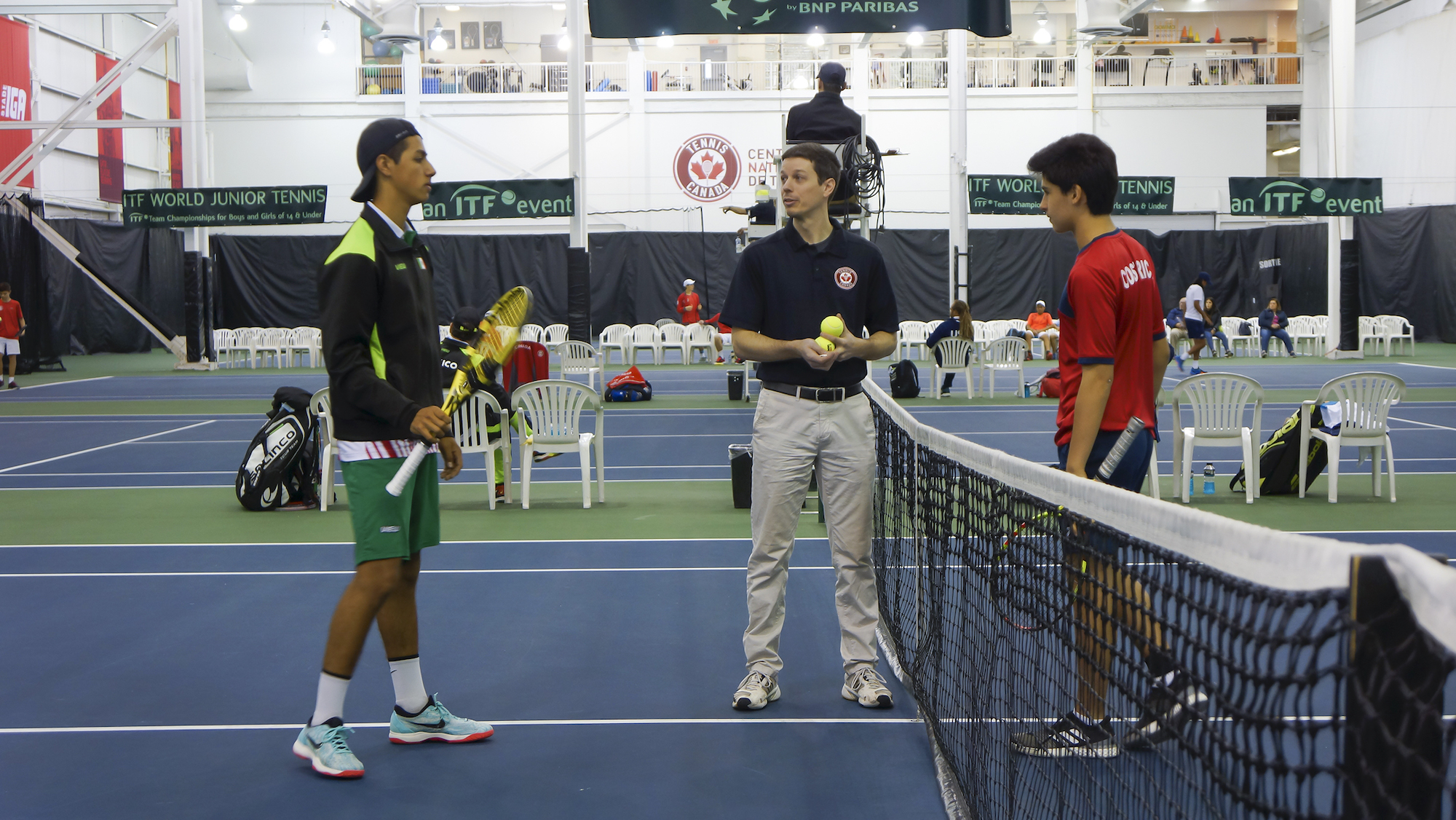Line Umpire
The Line Umpire’s primary role, as a member of the on-court officiating team, is to assist the Chair Umpire in determining if a ball falls within or outside of the boundaries of the court. In addition, a Line Umpire calls foot-faults and assists by performing other duties that are assigned by the Chair Umpire (for example, escorting players to the toilet during the course of a match and preparing and performing ball changes). As an assistant to the Chair Umpire, a Line Umpire will therefore never work on-court in a match that is not officiated by a Chair Umpire.
Roving Umpire
The Roving Umpire is a “Chair Umpire without a chair”; he/she exercises jurisdiction over more than one court at a time in the case of matches played without a Chair Umpire. The Roving Umpire’s duties are similar to those of a Chair Umpire and include, but are not limited to, the following responsibilities: ensuring that assigned courts are ready for play; enforcing the Rules of Tennis, the Code of Conduct, and the Tournament Regulations; resolving scoring disputes between players; overruling erroneous line calls by the players and calling foot-faults, when he/she is in direct observation of the court; controlling spectators, parents and coaches.
Chair Umpire
The Chair Umpire is responsible for all aspects of the match to which he/she is assigned. He/she applies the Rules of Tennis, the Code of Conduct, and the Tournament Regulations on court. In the absence of some or all Line Umpires, the Chair Umpire assumes all their duties except those that he/she may delegate to another umpire or to the players. During a match, the Chair Umpire may rotate, remove or replace any Line Umpire if such action will improve the officiating of the match. The Chair Umpire is the final authority on all questions of fact arising during the match. This includes overruling a Line Umpire in the case of a clear mistake by the latter. The Chair Umpire makes a first determination on all questions of law arising during the match, subject to the right of a player to appeal to the Referee.
Chief of Officials
The Chief of Officials recruits, assigns, (and replaces or reassigns, when necessary) and evaluates Chair Umpires and Line Umpires in those tournaments where the Referee has delegated these duties to him/her. In other words, the Chief is an assistant to the Referee in the specific area of the management of Officials.
Referee
The Referee is the final on-site authority for the interpretation of the Tournament Rules and Regulations, the Code of Conduct, the Rules of Tennis, and for all other matters that require immediate resolution at the tournament site. He/she supervises all aspects of play, including, but not limited to, the conduct and actions of players, coaches, parents, umpires, and ballkids. In collaboration with the Tournament Committee, he/she participates in making the draws and in preparing the daily Order of Play. The Referee decides any point of Tennis Law that a Chair Umpire is unable to decide, or which is referred to him/her by appeal from a player. The Referee’s decision in such cases shall be final. In some cases, the above responsibilities are assumed by a single official. In other cases, such as in professional tennis, a Supervisor, assigned by the ATP, WTA or ITF, will often share some of the Referee’s duties.
Follow Tennis Canada Officiating on social:
